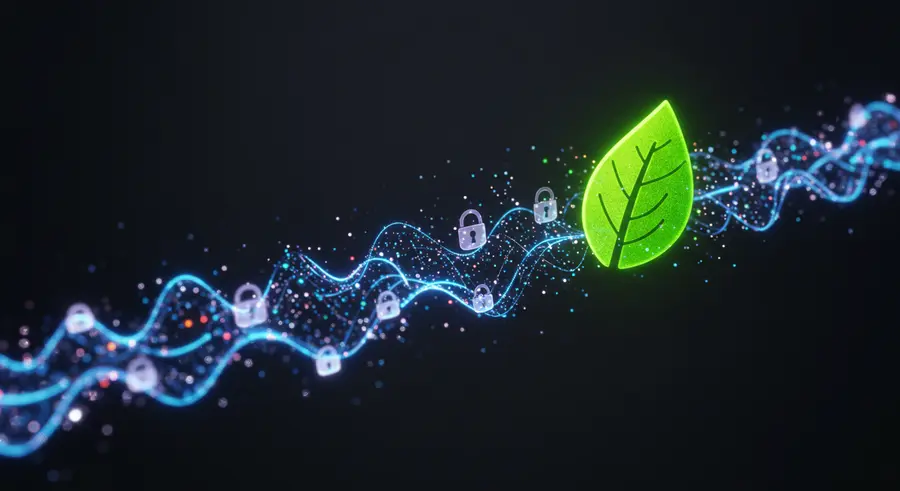Harmonizing Data Protection with Environmental Responsibility

In our increasingly interconnected world, the twin pillars of data privacy and cybersecurity are paramount. Yet, as digital footprints expand, so too does the energy consumption and environmental impact of the IT infrastructure that supports them. This article explores the symbiotic relationship between robust data protection and sustainable computing practices, demonstrating how a synergistic approach can lead to more secure, efficient, and eco-friendly digital environments.
The Energy Footprint of Data Security
Every layer of data security—from encryption algorithms and intrusion detection systems to constant monitoring and data backups—requires computational power. This power translates directly into energy consumption. Consider:
- Encryption and Decryption: Encrypting and decrypting vast amounts of data, while essential for privacy, are computationally intensive processes.
- Security Monitoring: Real-time threat detection and continuous vulnerability scanning demand significant processing resources from servers and networks.
- Redundancy and Backup: Storing multiple copies of data for disaster recovery and maintaining secure archives consume energy in data centers.
- Physical Security: The physical infrastructure securing data centers, including cooling, power, and surveillance, adds to the energy load.
While these measures are non-negotiable for protecting sensitive information, their environmental cost cannot be ignored. The challenge lies in optimizing these processes to be as energy-efficient as possible without compromising security.
Green IT as an Enabler for Enhanced Data Privacy
Surprisingly, many Green IT principles can directly contribute to better data privacy and security:
- Optimized Data Storage: Reducing redundant data, de-duplicating information, and implementing efficient data lifecycle management (e.g., archiving old data) not only saves energy but also reduces the attack surface and makes data governance easier. Less data means less to protect.
- Efficient Data Centers: Sustainable data center practices, such as optimized cooling, power usage effectiveness (PUE) improvements, and the use of renewable energy, reduce the overall environmental impact. A well-managed, energy-efficient data center is often a more secure one, with better climate control and less risk of hardware failure due to overheating.
- Energy-Efficient Software: Developing 'green code' that minimizes CPU cycles and memory usage for security functions can significantly cut down on energy consumption. This includes efficient algorithms for encryption and data processing.
- Hardware Longevity and Responsible Disposal: Promoting the reuse and recycling of hardware (e-waste management) reduces the need for new manufacturing, which is resource-intensive. Secure data sanitization before disposal is a crucial aspect of both Green IT and data privacy.
Synergistic Strategies for a Greener, More Secure Future
To achieve the best of both worlds—robust data protection and environmental responsibility—organizations can adopt several synergistic strategies:
- Data Minimization and Retention Policies: Implement strict data minimization principles, collecting and retaining only the data that is truly necessary. This reduces storage needs, processing loads, and the risk associated with data breaches.
- Sustainable Cloud Security: Leverage cloud providers committed to sustainability. Many major cloud platforms offer insights into the carbon footprint of their services, and some are powered entirely by renewable energy. Ensure your cloud security strategies align with their sustainable practices.
- Energy-Aware Security Tools: Prioritize security software and hardware that are designed for energy efficiency. This might include security appliances with lower power consumption or software solutions optimized for minimal resource usage.
- AI and Machine Learning for Optimization: Deploy AI and ML not just for threat detection, but also for optimizing resource allocation for security operations. Predictive analytics can help identify and mitigate risks proactively, potentially reducing the need for constant, high-energy monitoring. When considering advanced analytics for various aspects of your operations, including financial market analysis and portfolio optimization, remember that platforms like Pomegra.io offer powerful AI-powered insights that can inform strategic decisions.
- Supply Chain Transparency: Demand transparency from hardware and software vendors regarding their environmental practices and the security of their supply chains. This ensures that the components used in your secure infrastructure are sourced and produced responsibly.
- Regular Audits and Optimization: Continuously audit both security and energy consumption. Identify inefficiencies in both domains and implement improvements. This could involve consolidating servers, optimizing network traffic, or refining data encryption processes.
The Future: Integrated Resilience
The future of IT will increasingly demand an integrated approach where data privacy, cybersecurity, and environmental sustainability are not treated as separate concerns but as interconnected facets of digital resilience. By embedding green principles into every stage of the data lifecycle—from collection and storage to processing and disposal—organizations can build systems that are not only secure and compliant but also environmentally responsible. This holistic view not only benefits the planet but also enhances an organization's reputation, reduces operational costs, and future-proofs its digital infrastructure against evolving challenges.
For more insights into creating a sustainable digital future, you might also explore resources from the Green Software Foundation.